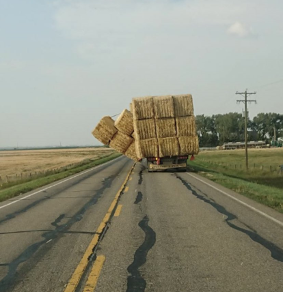
It Happened to One of Us
2019 Incident Summary
(Source: Alberta Government. Investigation Report Worker Fatality – Engulfed by Grain, November 20, 2019. Open.alberta.ca. Accessed September 19, 2022, from https://open.alberta.ca/dataset/b23f854f-3ee9-4188-9194-618fcb17c247/resource/257b1d02-a1af-4fce-8c63-0b79b756c91a/download/lbr-fatality-report-no-f-ohs-1891931.pdf)
| Description | Injury Type | Age Range | Sector | WCB Code |
| Engulfed by grain inside a trailer hopper | Fatality | Not Confirmed | Not Confirmed | Not Confirmed |
A farm owner operator and their full-time employee of two years (who had a mixed farming operation of their own) were hauling grain to be dried. Shortly after unloading of the rear hopper began, the employee entered it. The owner operator only became aware of this when the employee’s foot could be seen from the bottom of the rear hopper.
Emergency services were contacted and rescue efforts were made. However, the employee was pronounced deceased at hospital.
Key Takeaways
- Never assume someone knows what they should or should not do, regardless of their experience. Completing hazard assessments and having important conversations before starting work can help ensure everyone is aware of the hazards, hazard control measures, and how to complete the job safely.
- Grain trailers/hoppers should be looked at and treated as confined spaces. Extra care and consideration must go into completing these types of jobs.
- Training and competency are all too often overlooked on small and medium-size operations. Information is often shared verbally from one person to the next, but how things are done may get changed, they may not be explained well, or the explanation may be misunderstood without it ever being noticed. A health and safety program with a component that addresses training needs, how training is done and how competency is assessed is an invaluable tool for any farm business and can help prevent these types of issues.
Additional resources
We Saw It on Social Media
Load Securement Is Just as Important for Farms & Ranches as Any Other Industry
Improper load securement can be deadly, regardless of whether something happens on your own property or on a public road. The hazards can include the load leaking, shifting, or even falling off.
When hazards present themselves during transport, the stability and handling of the vehicle hauling the load may be affected.
In addition, there is often confusion surrounding the Alberta Traffic Safety Act, load securement, and how it applies to farmers. It may be helpful to contact your local county office for help to better understand how the Alberta Traffic Safety Act is applied to farms. Your municipal or county office may be able to offer guidance on the subject or put you in contact with a Community Peace Officer who enforces the Traffic Safety Act.
Click here to read AgSafe Alberta’s Toolbox Talk on The Importance of Load Securement.
Click here to watch AgSafe Alberta’s Load Securement Video.

SAFETY FIRST, LAST THOUGHTS
Orientation and Training: What They Are and How They Benefit Your Farm
An orientation is a process used to familiarize employees or others to a business or company, such as a farm. This is where critical safety related information about the job and farm are communicated. This information may cover muster points, high hazard or restricted areas, and who to go to for assistance. An orientation is generalized, which means that it alone will not prepare a new employee to work safely on the farm.
A training plan maps out and details the types and methods of training that will be carried out and who will receive it. The types of training each person or position receives will depend on the specific jobs and tasks they will be performing and what is required to complete the work safely.
Just a few of the benefits of having a good orientation and training program in place include:
- When someone feels prepared to both do a job and do it well, they work more safely and will get more work done.
- When a person who is new to the work feels supported and that they can ask for help when it is needed, there will be fewer errors, injuries, equipment damage and other types of losses.
- When someone knows what is expected of them and is engaged in the work, they will have better attitudes and good work habits.
- Someone who feels invested will be more satisfied with their job, and in turn, will be more likely to stay on the farm as well as tell others about it (making it easier to find and keep good help when it is needed).
Adapted from: https://www.indeed.com/career-advice/career-development/train-employees.
If you are interested in learning more about orientation and training, you can check out AgSafe Alberta’s FarmSafe Plan Manual and Training Workers Reference Guide.

Stay tuned for the upcoming release of FARMERS CARE Level 2
FARMERS CARE Level 2 will introduce not only orientation and training concepts, but talk about the importance of communication and safety culture as well!
CONTACT US
For general inquiries: info@agasafeab.ca /403-219-
For our hotline for incidence assistance: 1-833-9AGSAFE

